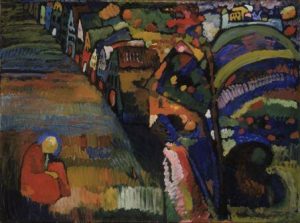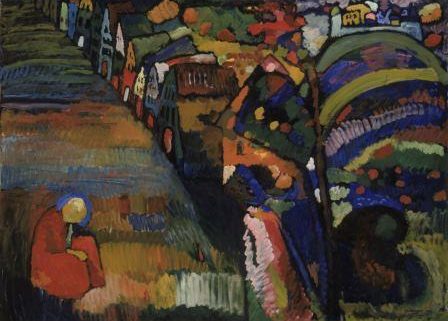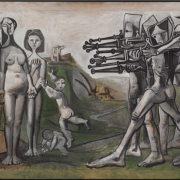Threat of an erosion of Second World War Era Restitution Principles
On 3 December 1998, 44 governments participating in the Washington Conference on Holocaust-Era Assets endorsed what came to be known as the “Washington Principles” for dealing with artwork confiscated by the Nazi Regime during the Second World War. The Washington Principles establish, inter alia, that in assessing whether a work of art has been confiscated by the Nazi Regime and not subsequently restituted, consideration should be given to the “circumstances of the Holocaust era”. In 1999, the Council of Europe adopted a similar set of principles on Looted Jewish Cultural Property. These principles have formed the framework against which restitution claims have been assessed domestically since then.
In The Netherlands, the Advisory Committee on the Assessment of Restitution Applications for Items of Cultural Value and the Second World War (Restitutions Committee) was established in 2002. The Restitutions Committee investigates claims of stolen artwork and offers binding opinions thereon. Thus far, it has issued over 155 rulings, 74 of which have resulted in full restitutions.
Its most recent opinion of 22 October 2018 has drawn particular international attention. The opinion pertains to Wassily Kandinsky’s 1909 “Painting with Houses”.

Prior to the war, the painting was owned through inheritance by Emanuel Lowenstein. In October 1940, five months after Germany invaded The Netherlands, it was put up for auction at the Frederik Muller auction house in Amsterdam and acquired by the Stedelijk Museum in Amsterdam for 176 Dutch Gilders. The painting has been exhibited in the Museum since then.
The Restitutions Committee examined the circumstances in which the painting came to be auctioned. It found no evidence that the German occupying forces had confiscated the painting. Interestingly, the Committee referred to the 2001 recommendation by the Ekkart Committee—otherwise known as the Origins Unknown Committee, set up to investigate the provenance of works of art repatriated from Germany after the war—according to which sales by private Jewish individuals in The Netherlands from 10 May 1940 onwards must be considered to be involuntary, unless the facts expressly show otherwise. However, it went on to state that this policy recommendation, which involves a reversal of the burden of proof, is not directly applicable to binding opinion cases. It found that while the sale of the painting in October 1940 cannot be considered in isolation from the Nazi Regime, it was also in part the consequence of the deteriorating financial circumstances in which the then owners found themselves well before the German invasion. In the Restitutions Committee’s view, this provided a less powerful basis for restitution than a case in which there was theft or confiscation. The Restitutions Committee further drew on the fact that there was no indication of attempts to claim the painting back from the Museum after the war. Finally, the Restitutions Committee found that there was no evidence that the City Council had not acquired the work in 1940 in good faith. The Restitutions Committee gave consideration to the City Council’s contention in relation to the need to maintain the “public art stock” and its submission that the painting has important art historical value and “is an essential link in the limited overview of Kandinsky’s work in the Museum’s collection, has a corresponding place in that collection, and is included in the permanent display”.
On these grounds, the Restitutions Committee rejected the restitution application, having found that the interests of the applicants did not outweigh the interests of the City Council in retaining the work.
This binding opinion of the Restitutions Committee was heavily decried as a step back in the wrong direction and criticised for introducing a “hierarchy of loss”, whereby confiscation ranks higher than forced sale, as well as for shifting the burden of proof of involuntary loss onto claimants and for weighing the interests of a museum to keep a work of art (and maintain, as the Restitutions Committee puts it, “the public art stock”) against a claimant’s interest in recovering it.
The Restitutions Committee will be subject to scrutiny in the United States this time as the heir to the Katz family is challenging, in a civil lawsuit before the US District Court for the District of South Carolina, the Restitutions Committee recommendations of 2013 and 2017 rejecting the claim of the Katz family for restitution of 143 paintings and other artworks currently in the possession of several Dutch institutions.
The Restitutions Committee had found that, contrary to private owners, art dealers operating during the German Occupation still had to prove that the sale was involuntary. In this specific case, the Restitutions Committee found that, although the situation was duress, there was no evidence that the sales had been made under duress. In the civil lawsuit, the claimants submit, on the contrary that duress affected all art transactions by the Katz family during that period and that “Defendants have never owned the Artworks, and have seen evidence that Firma D. Katz owned the Artworks at the time of their sale under duress. To allow Defendants to retain the Artworks-and to profit from their display, in many cases-is unconscionable, violates agreed principles of World War II art restitution, and goes against the weight of both evidence and history.”






